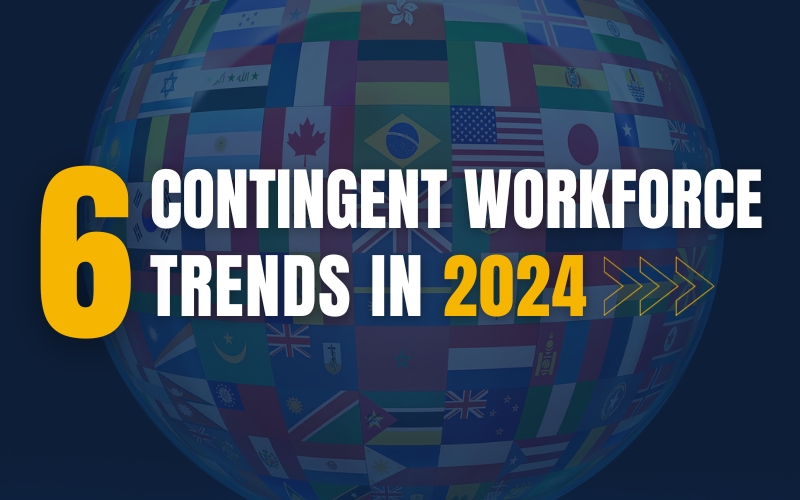The Raise the Wage Act of 2019 would result in a minimum wage increase that would significantly affect businesses. Discover ways to deal with rising labor costs.
Designed to ensure that employees earn a reasonable living wage, the Raise the Wage Act of 2019 (H. R. 582) proposes a gradual minimum wage increase from $7.25 to $15.00, doubling the wage across the U.S. by 2024. The bill was introduced in the House of Representatives January 2019.
Over the last several years, minimum wage increases of varying amounts have been passed in cities such as Seattle and Washington D.C.. States that are in the process of or already have raised minimum wages include California, New York, New Jersey and Massachusetts.
Despite the obvious benefits to workers, there are concerns about minimum wage hikes and the effect it could have on businesses and even the employment rate.
“Though they acknowledge that increased wages are the most important benefit they can offer employees, business owners have reported to us that rising employee costs are a major concern, right behind cash flow,” says John Waldmann, CEO and founder of Homebase, an hourly employee scheduling and time tracking software company.
Possible Results of Minimum Wage Increase
“The increase in minimum wage is likely to cut into businesses’ bottom lines, particularly those that primarily hire employees at or near minimum wage,” says Jacob Dayan, CEO and co-founder of Community Tax, which offers tax services.
“Businesses can—and most likely will—combat this by passing this added cost onto the consumer by increasing the price of goods [and] services,” Dayan adds.
“For food service and retail businesses, a minimum wage increase might make employee retention a little more difficult,” says Waldmann.
“It’ll be tougher for businesses to compete on wages, so they’ll need to start offering additional benefits to attract and keep their employees, like more flexible—or predictable—work schedules, time off and commuter benefits.”
Waldmann notes that one Homebase customer in Oakland, California, which is currently at $13.80 minimum wage, also offers a wellness stipend in order to remain competitive.
“Labor and service industries like retail, restaurants and hospitality will be affected more than other industries by higher minimum wage rates, because of their labor market and pay structures,” adds Linda Ginac, CEO of TalentGuard, a competency-based talent management software company.
Chris Willat, owner of Alpine Maids, has found that Colorado‘s minimum wage hike has had a profound financial effect on his business.
“We’re currently raising wages year over year to meet Colorado’s minimum wage increase,” says Willat. “We started at $8.31 per hour, and the last increase will be $12 per hour by January 1, 2020.
“As a service business, wages make up most of our spending,” continues Willat. “A $1 increase spread across 20 people means an almost $4,700 per month increase in expenses.”
Minimum Wage Increase Could Mean Reduced Hiring
Given the extra expense of wage increases, businesses are likely to cut back on hiring, believes Peter Limone, president and CFO of Innovative Employee Solutions, a provider of employer of record services, including outsourced payroll.
“Conduct a survey of clients to determine the impact of a price increase to offset a minimum wage increase… Implementing a price increase strategically may be best, compared to increasing pricing across the board.” —Peter Limone, president and CFO, Innovative Employee Solutions
“Some businesses may automate to reduce the number of jobs, while others may close their doors due to reduced profitability,” says Limone.
When faced with a minimum wage increase to $15 per hour in San Francisco, Andrew Bellay, owner of MetaNeer Labs, a software development firm, responded by transitioning to outsourcing.
“I now hire developers, designers and writers all around the world, which is less costly,” he says. “This also allows me to only pay for services when I need them, rather than 40 hours a week for full-time employees, plus benefits.”
Minimum Wage Increase Benefits for Employers
The most obvious benefit of a minimum wage increase is happier, more satisfied employees. And that has its advantages for the employer, notes Ginac.
“When employees aren’t making enough money for financially stable lives, they’re likely working multiple jobs, which can impact the quality of performance,” says Ginac. “Financially stable employees can better focus their efforts.”
Patrice Martel is owner of Pacific Star Gutter Service, located in Washington State. (The minimum wage is currently $12.00 there.) He’s found that a higher minimum wage allows him to hire more motivated workers.
“If I hire teens in the summer, for example, they’re more likely to work hard, because they’re getting paid well,” says Martel.
Raising wages has also allowed Martel to weed out employees.
“I can cull employees I don’t think will benefit my business if they are paid more, and hire employees at a higher wage, who I think will be better performers,” he explains.
Preparing for a Minimum Wage Increase
Whether the Raise the Wage Act passes, a minimum wage increase is inevitable. You may find it necessary to raise wages to stay competitive. Here are several ideas for effectively absorbing a minimum wage increase.
Watch labor costs.
“We’ve found that business owners on average can save a few hundred bucks per location per year by preventing early clock-ins,” says Waldmann.
Inform customers.
“If you have to increase prices, make sure your customers understand why,” says Waldmann. “When Oakland increased minimum wages for the first time a few years back, the city produced a poster that businesses could display. It added helpful context to price increases.”
Poll clients.
“Conduct a survey of clients to determine the impact of a price increase to offset a minimum wage increase,” says Limone. “Some clients may respond well to a price increase, while some may not. Implementing a price increase strategically may be best, compared to increasing pricing across the board.”
Determine price elasticity of goods and services.
“Do the analysis necessary to determine if the market will bear a price hike and act accordingly,” suggests Limone.
Absorb some costs.
“Determine whether the business can bear a comfortable reduction in profitability and how much,” says Limone.
That way you can budget for the increased expense.
Reduce hiring.
“Now may be the time to research whether reducing certain tasks or reducing the level of service provided to clients may be best,” says Limone.
You may find, as Willat did, that increasing efficiency is the answer to reduced hiring.
“We were driven to increase our efficiency and grow our business with fewer management staff than we would have without a minimum wage increase,” says Willat. “The efficiency increase alone means we can take on 10 percent more clients with the same amount of staff.”
Allow for more overtime.
A few extra hours paid to existing employees during busy times may be a better choice than additional hiring.
Focus on career development and retention strategies.
“Such strategies will help keep employees at your company,” says Ginac. “As the minimum wage increases, job seekers will find certain employment opportunities more desirable and stable.”
Raise the bar on skills required for new workers.
“If your business is required to pay more for new workers, require higher level skills and benefit from the increased productivity,” says Limone.
Please see the published article on AmericanExpress.com
Article written by: Peter Limone, Chief Financial Officer (CFO) at IES
Peter Limone is Chief Financial Officer (CFO) for Innovative Employee Solutions (IES), a leading global Employer of Record in more than 150 countries that specializes in contingent workforce solutions such as outsourced payrolling, independent contractor compliance, and contractor management services. Founded in 1974, IES has grown into one of San Diego’s largest women-owned businesses and has been named one of the city’s “Best Places to Work” for 10 years in a row.






